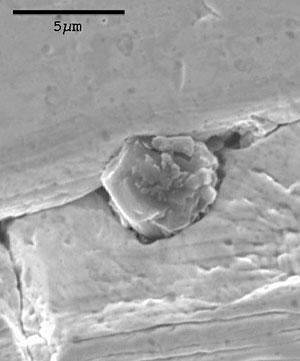News
Solving the mystery of nitrogen throughout the Universe
Tuesday 13th October, 2015
Researchers in the E.A. Milne Centre for Astrophysics have made a breakthrough in solving the mystery of the origin of nitrogen, one of the most important elements for life in the Universe.
The study, led by Dr Marco Pignatari with Professor Brad Gibson, PhD student Chris Jordan and scientists from across the world, analysed fossils of stars that died before the Sun was formed, to discover how nitrogen was produced.
The research is published in the leading academic journal, Astrophysical Journal Letters.
Dr Pignatari said, “Nitrogen is an element fundamental for our life, but we do not yet have a good understanding of how it was made in stars in different epochs of the Galaxy.”
“Furthermore, its isotopic composition observed in the solar system does not match with what theoretical stellar models have predicted so far. We were clearly missing something, it was a mystery.”
The work of the research team may have finally solved this unknown.
Over the last 30 years, a huge number of different types of anomalous dust particles have been identified in old pristine meteorites. Their chemical composition, analysed in a laboratory, found that it does not belong to the solar system.
The analysis of the unknown particles suggested that the small grains originate from a time before the Sun (presolar), and condensed around old stars that died.

A presolar silicon carbide grain mounted on a gold foil. Credit: R. Trappitsch, Chicago Center for Cosmochemistry, The University of Chicago
Because of their peculiar abundance, some of this dust has been identified as relics of ancient massive supernovae – massive explosions of stars.
The interpretation of their signatures can provide the most direct information about how these spectacular explosions work.
The analysis of the presolar dust not only gave the researchers insight into supernova explosions, but also what happened to their parent star before the explosion.
The conditions in these stars were found to be more extreme and complicated than what was expected, with mixtures of hot stellar matter with colder material coming from the outside.
Pignatari said, “It is like dropping cold water on a frying pan just out from the cooking plate. Something similar happened in stars, allowing nuclear reactions to make a lot more nitrogen, including its more elusive and rare stable isotope. This is exactly what is needed to explain observations, in the early galaxy and in the solar system.”
Dr Pignatari believes these exciting first results are just the beginning, and more research and new discoveries will continue at the E.A. Milne Centre.
Dr Pignatari said, “Presolar grains have much more to tell about supernovae and what elements they made. They gave us a lead to follow, and at the Milne Centre we will pursue that lead until the end of the trail.”
Top image: Hubble sees a spiral galaxy’s brights and darks. Image credit: ESA/Hubble & NASA and S. Smartt (Queen’s University Belfast); Acknowledgement: Robert Gendler